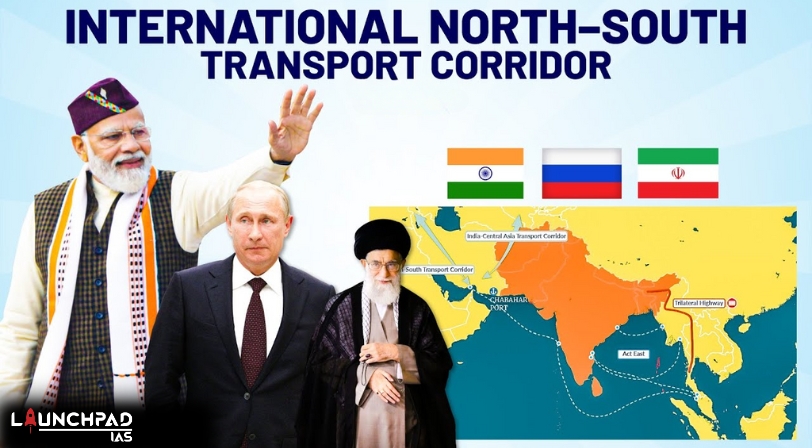- India, Iran, and Russia had in September 2000 signed the INSTC agreement to build a corridor to provide the shortest multi-model transportation route linking the Indian Ocean and the Persian Gulf to the Caspian Sea via Iran and St Petersburg. ‘
- It is a 7,200-km-long multi-mode network of ship, rail, and road routes for moving freight.
- Regions involved: India, Iran, Afghanistan, Azerbaijan, Russia, Central Asia and Europe.
- From St Petersburg, North Europe is within easy reach via the Russian Federation. The estimated capacity of the corridor is 20-30 million tonnes of goods per year.
- The route primarily involves moving freight from India, Iran, Azerbaijan, and Russia via ship, rail, and road.
- The objective of the corridor is to increase trade connectivity between major cities such as Mumbai, Moscow, Tehran, Baku, Bandar Abbas, Astrakhan, Bandar Anzali, etc.
Significance of the corridor:
- Conceived well before China’s Belt and Road Initiative (BRI), INSTC will not only help cut down on costs and time taken for the transfer of goods from India to Russia and Europe via Iran but also provide an alternative connectivity initiative to countries in the Eurasian region.
- This will also synchronize with the Ashgabat agreement, a Multimodal transport agreement signed by India, Oman, Iran, Turkmenistan, Uzbekistan, and Kazakhstan, for creating an international transport and transit corridor facilitating the transportation of goods between Central Asia and the Persian Gulf.
- With the easing of sanctions on Iran and renewed global interest in alternative trade routes, INSTC has gained momentum.
- New members like Uzbekistan and Bulgaria add further diversity. India actively promotes the corridor through investments and diplomatic efforts.
- The evolving geopolitical landscape, with India seeking to diversify its trade partnerships and Russia looking for alternatives to Western routes, could further propel INSTC’s growth.

Proposed International North-South Transport Corridor


